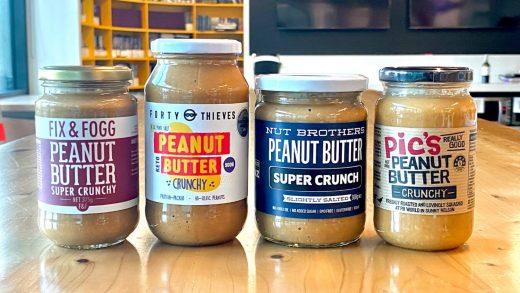
This article was originally published in December 2022.
Pack the car, grab the whānau and hit the road. It’s summer and that means one thing – a week in a campsite, battling mozzies and humidity and keeping your air bed alive. Greg Roughan has dug deep to find the full complement of camping tips, tricks and to-do list essentials to make it a trip to remember.
A is for air mattress.
A sort of inflatable golden ticket that lets you access camping trips of more than two nights. Without an air mattress you’ll experience, on day three, a powerful urge to pack up and drive home – slowly and carefully, lest your sleep deprivation cause an accident.
B is for booking.
If you’re reading this and you don’t have one for the summer holidays, then put it down immediately and try to find somewhere with space. The very best and beloved waterfront camping grounds will book out months before Christmas, but small parties can still find single spaces if they hunt around.
A good tip if you’ve left it really late is to look inland – there are some really charming forested sites around New Zealand and they don’t fill up nearly as quickly as campgrounds by the beach.
Supplied
The essence of successful carless camping is taking as little gear as possible – car camping is the opposite.
C is for car camping.
Isn’t all camping car camping you say? Not so. Another breed of campers exist, but on a totally different plane. The essence of successful carless camping is taking as little gear as possible – while the essence of successful car camping is the opposite. For this reason it’s hard to make the transition from one to the other (though very much worth it).
D is for DoC!
The Department of Conservation provides a sort of gold standard for cheapness and quality in the New Zealand camping experience. DoC sites are almost always on the simple side – and in some of the best and most beautiful locations – which helps keep all the other campsites honest.
Getty Images
DoC sites are almost always on the simple side – and in some of the best and most beautiful locations.
E is for ezi up.
A kind of mobile gazebo that provides shade – and the illusion of rain protection. Cruelly misnamed, these are best assembled with help from two or three friends, or you risk erecting something resembling the Mind Flayer from season 2 of Stranger Things.
As a rule, any group of campers should have one ezi up for every three tents. Larger groups should consider an extra ezi up to create a communal kitchen zone where you can spend your entire holiday asking “whose lighter is this? Can I borrow it?” over and over until you go home.
Supplied/Getty Images
As a rule, any group of campers should have one ezi up for every three tents.
F is for folding tables.
These fit neatly in your communal kitchen, and make life much easier – but are a faff to transport. Find a way to squeeze a few in and you’ll enjoy not chopping vegetables on your lap, and spending dinner time around a table.
G is for a gas.
A full size gas barbie is an undeniable asset on week-long trips, but raises issues of transportability and space. Charcoal cookers on the other hand are smaller, slower, and let you show off your skills to the other campers. Chances are you’ll end up doing most of your cooking on a simple gas ring (or using the campground kitchen).
Getty Images
Breaky sorted!
H is for hammer.
If you don’t bring one, you’ll get painful dents in your hands from pushing tent pegs into stony ground. And if you do bring one, you’ll be given a perfect sandy lot where the pegs slide into the earth like fingers into day-old pav…
I is for ice.
The true timekeeper of your camping trip. With a good chilly bin and careful meltwater management you can get three days from a bag of ice – but once it’s gone, so is your meat, milk, butter and booze. So no matter your fantasies of living free from civilisation like a contestant on that survival show Alone, you’ll need to drive back to town every other day for a new bag (or two, if you drink gin). Caravan campers on powered sites needn’t bother, obviously – and might even lend you some milk.
Supplied
If you do bring a hammer, be prepared to loan it out to half the campsite – same goes with good coffee.
J is for Java – as in coffee.
As in, if you have a serious coffee addiction you’ll want to work out how you’ll get your fix. If instant does it for you, well, more power to your arm – but if you need fresh coffee then one of those little stovetop espresso makers is the go.
Two things to be aware of here: yes you will be making coffee for half the campsite all morning, so you’ll need more grinds than you realised. And secondly, a full espresso maker, balanced on top of a gas burner, itself balanced on top of uneven grass, is like a wobbly little napalm machine that can seriously ruin your trip.
K is for karma.
Yes you should have brought ear plugs, and no, it’s not very considerate of the people next to you to be so noisy, so late. But gosh your children are early risers… Basically, on campsites, what goes around comes around.
Supplied
Stock up on loo roll – not all campers are willing to spare a square.
L is for loo paper.
Bring spare or live in fear.
M is for mosquitoes.
Nothing will make you look more like a loony than trying to kill every mosquito in your tent before bed, while your torch projects your manic shadow on its side for the amusement of all. Unfortunately no-one has really solved the mosquito/camping conundrum.
Deet is safe and effective – but has a weird habit of dissolving anything plastic (including clothes). A few well-placed coils in the evening are the next best thing, but realistically, remember to pack some antihistamine.
Getty Images
Rule of thumb: if you have the choice, only bother with canvas tents for trips longer than a week.
N is for nylon.
Which along with polyester is the fabric most tents are made from. These are lighter – and cheaper – than the old-fashioned canvas tents that some prefer, but can get very hot inside. With lighter material comes lighter poles – often held together with elastic – which makes getting them up far easier and faster.
The downside, though, is they’re less reliable in high winds and don’t create proper shade. And no matter how waterproof your tent claims to be, if it rains steadily then anything pressed up against the fabric (like your sleeping bag or clothes) will draw moisture into the interior.
Canvas tents, on the other hand, give a more substantial shade, so can provide actual shelter from the heat inside – and are surprisingly waterproof. But they’re very heavy – take a lot of space in your vehicle – and take longer to get up and down. Rule of thumb: if you have the choice, only bother with canvas tents for trips longer than a week.
O is for office.
Sort of the upside of not staying on a DoC site. Sure, at a commercial campground you’re rammed cheek-by-jowl with every other bogan and their offspring. But at least when you run out of milk you just buy more at the office.
Supplied
Invest in a reclining chair – squatting miserably on a chilly bin for days on end is no fun.
P is for puncture repair kit. See A.
Q is for, well, queue.
Which you will do at the shower block any time after 8am.
R is for reclining chairs.
Because after your first few camping trips you work out that not squatting miserably on a chilly bin for days on end – getting up and down every time someone wants a drink – adds a lot to the general experience.
S is for shade.
And sunblock. And sunburn. And six-am wake-ups because the tent became an oven after dawn. Let’s face it, camping in the New Zealand summer is all about getting away from the sun – and smart campers choose their site with shade in mind. A simple shrub will invoke intense jealousy from your shadeless neighbours come 2pm, while those blessed with bushes on their eastern boundary will get an extra couple of hours sleep-in in the morning.
Getty Images
Smart campers choose their site with shade in mind.
T is for trailers.
And towbars too – something that tends to happen to you about five years into becoming a regular camper. At first you’re content with just the car and a two-person pup tent. It’s cosy; even a bit romantic. Next year you treat yourself to folding chairs and a table to cook and eat on. Then before you know it you’ve bought a trailer stuffed to the gunwales with kids’ boogie boards, and more gear than you have in your actual house.
Top tip: the ultimate camping trailers have to be those lockable covered luggage pods that airport shuttles tow. You can pick them up on Trade Me sometimes, and once you unload all your gear from inside they’ll convert into a brilliant cooking station.
Supplied
When the ice runs out, vege sausies are a lifesaver.
U is for UHT.
Aka ultra heat treated milk. This may sound like a good idea – and it is, for your coffee maybe – but it’s pretty disgusting on cereal.
V is for vegetarian sausages.
Seriously. You might scoff, but on day four, when the ice runs out and your chilly bin has less cooling power than the other side of the pillow on a hot night, those vege sausies are a lifesaver. Infinitely less likely to give you listeria than their meaty cousins, they can be chopped into a curry mix, or fried and wrapped in bread with T sauce for a simple protein fix.
W is for water.
Something worth thinking about before you go. All campsites have at least some kind of water supply, but it’s often inconveniently far from your tent, and lugging slopping saucepans back to your site thrice daily wears thin. A 10-25L container with a tap is a good solution, and having water on hand means you’re more likely to stay hydrated during the day. Whatever you go for, try to avoid buying a brick of plastic water bottles – you’ll go through hundreds and feel bad about the waste.
Getty Images
Don’t forget the jandals!
X marks the spot.
Where you pitched your tent last year – and the year before that. One of the great pleasures of becoming a camper is the connections you make year by year when you stay at the same magical place. Some families grow up seeing their children play with the same kids each summer – and eventually those children bring families of their own to make friends anew. We really are lucky aren’t we.
Y is for “You should have brought jandals.”
It’s cold waking up for a wee. The grass is dewy, your feet are bare, and in the effort to not shine your torch onto strangers’ tents you’ve tripped up on their guy rope and woken the whole lot anyway… Maybe you should just wee behind your own tent? It’s a long way to the toilet block after all.
Z is for ZZZs.
The blessed sleep that you’ll miss so profoundly when the air mattress deflates, or the party goes late next door. Why do we go camping again? Maybe, after all the gear and the stress – after the packing, the sunburn and the weather dramas – it’s simply to remember how much we have right back in the comfort of our regular homes.


